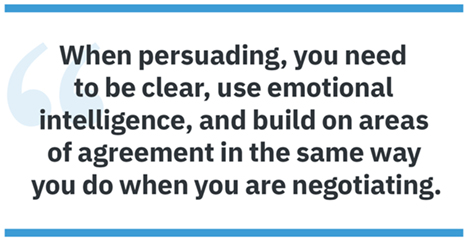By Michael Harvey | Fellow
Soft skills function as an enabling technology helping you drive change and show your technical skills more capably.
Content and project management, technical proficiency, and programming are useful skills to acquire to be a productive technical communicator. However, to flourish in the role, you should also cultivate soft skills. Soft skills are behaviors that help you interact harmoniously with others. Well-developed soft skills enable you to exercise hard-earned technical skills more effectively in the workplace.
Recruiters highly value soft skills. According to LinkedIn’s 2019 Global Talent Trends report, 92 percent of talent acquisition professionals believe that soft skills are equally or more important than hard skills. Eighty-nine percent said that when a new hire did not work out, it was because they lacked soft skills.

According to LinkedIn’s 2019 Global Talent Trends report, 92 percent of talent acquisition professionals believe that soft skills are equally or more important than hard skills.
Another reason to develop soft skills is job security. Reports abound claiming that AI could replace proofreaders, bookkeepers, soldiers, and even doctors. But it is unlikely that AI is going to figure out how to use soft skills anytime soon. Even the most sophisticated chatbot cannot take a joke.
These four soft skills are critical for technical communicators:
- Listening
- Negotiating
- Persuading
- Presenting.
The foundation of these skills rests on something inherent in our profession—communication. These skills overlap with one another. All involve listening. Successful negotiating requires listening and persuading. Effective presenters are persuading their audience to listen and think about their content.
Pre-pandemic, you may have ordinarily practiced soft skills face-to-face. Now, with a reduction of in-person communication, you need a different mindset to use them. But first, you need to understand them.
Listening
Common sense suggests that because we have two ears and one mouth, we should listen at least twice as much as we speak. Listening is important because it helps you avoid misunderstandings and confusion. It helps to build trust and rapport. As a result of that trust, the application of listening skills amplifies the power of what you say.
Developing listening skills requires practice of the following behaviors:
|
Behavior |
Execution |
|
Give undivided attention |
|
|
Provide feedback |
|
|
Confirm information |
|
|
Use body language to express understanding |
|
|
Use active listening |
|
Negotiating
Negotiating guides people to a mutually acceptable solution to a problem. It is important because a workplace with fewer conflicts is understandably more productive. To negotiate effectively, practice the following behaviors:
|
Behavior |
Execution |
|
Be clear about what you want |
Crucial Conversations by Joseph Grenny and colleagues emphasizes starting with the heart whenever you negotiate: take a breath, clear your head, and ask what you want for yourself, for others, and for the relationship with the person with whom you are negotiating. |
|
Be clear about what you mean |
Do not assume that the person with whom you are negotiating knows everything that you do. For example, recall conversations with SMEs. They have more expertise than you do, so when they explain things to you, they might inadvertently leave out key details. Turn this around: read the person with whom you are negotiating for clues about whether they understand what you are saying. Use active listening skills to arrive at mutual clarity. |
|
Use emotional intelligence |
|
|
Build on areas of agreement |
Seek out areas where you agree and move forward from them. When you hit a snag, this gives you a place from which you can reset. |
According to Michael and Mini Donaldson, authors of Negotiating for Dummies, signs that someone is resisting what you are saying include:
- Twisting away from you
- Reducing eye contact
- Locking ankles
- Making fist-like gestures
- Fidgeting.
When you see these cues, turn up your emotional intelligence and pivot the conversation to areas of agreement.
Persuading
In contrast to negotiating, which emphasizes a mutually satisfactory outcome, persuading focuses more on getting others to see things your way. This is important for leaders who need to inspire and motivate others. When persuading, you need to be clear, use emotional intelligence, and build on areas of agreement in the same way you do when you are negotiating. You also need to do the following:
|
Behavior |
Execution |
|
Build rapport |
|
|
Build a logical case for your position |
|
In Never Split the Difference…, Chris Voss, a former hostage negotiator, explains that there is one phrase that indicates you are succeeding in convincing someone of your position: “That’s right.”
When someone says, “You’re right,” it indicates that they are just going along with you. As Voss explains, “whenever someone is bothering you, and they just won’t let up … what do you tell them to get them to shut up and go away? “You’re right.” But when someone says, “That’s right,” it shows that they have assessed what you said and pronounced it correct. After you hear, “That’s right,” give the other person an opportunity to elaborate their position, paraphrase what you hear them say, and then point out how what you are asking for aligns with it.
When persuading, you need to be clear, use emotional intelligence, and build on areas of agreement in the same way you do when you are negotiating.

Presenting
When presenting, you might be referring to a slide deck, giving a speech without slides, or teaching a class. Effective presenting requires you to tailor your presentation to the needs and knowledge of your audience. This requirement is congruent with the core skill of technical communication.
To immerse yourself in expert tailoring, check out videos on YouTube (see the Suggested Reading list) that show someone explaining a topic in five levels of increasing complexity. One video shows a computer scientist explaining machine learning to a child, a teen, a college student, a graduate student, and an expert. Another video has a neuroscientist explaining human memory to someone at those same five levels.
To deliver an effective presentation, you must prepare. You might be able to extemporize a passable presentation about something that you know, but to give one that leaves an impression and drives home your key points, regardless of what you know, you must do the following preparation:
|
Behavior |
Execution |
|
Block out a complete draft |
Enumerate the main points that you plan to cover. Fill in details for each point. Do not get distracted by one point at the expense of others. Produce something of substance on every point that you intend to cover. |
|
Use visuals |
When you are presenting with slides, use graphics more heavily than text. You do not want your audience reading your slides instead of listening to you speak. Cover what you intend to say in your slide notes. |
|
Review and revise the draft |
Identify points that are well covered, inadequately covered, and excessively covered. Trim, fill, and fix points accordingly. |
|
Rehearse the presentation |
Perform a dry run of your presentation to a group of trusted colleagues. A performance helps you identify unnecessary content, lack of clarity, and most importantly, awkward transitions. |
|
Revise the presentation based on the rehearsal |
This might require you to discard points or rethink the sequence of topics. Remember what Faulkner said: “Kill your darlings.” |
How to Apply Soft Skills in a Post-Pandemic Workplace
The COVID 19 pandemic upended the professional workplace. With the new normal of remote and hybrid work, the opportunity to exercise soft skills face-to-face has diminished.
Consider the pre-pandemic workplace.
We went into an office, interacted with our colleagues face-to-face, and took part in spontaneous conversations in office doorways or break rooms. We could read our colleagues’ faces and body language to guide our interactions.

Contrast that to our current workplace.
When we see our colleagues, it is usually on a screen. Spontaneous conversations take place in chat windows and juggling those chats can be difficult.
Applying soft skills in a post-pandemic workplace constricts our use of body language cues during interactions. You must adjust your mindset accordingly. The lack of or reduction in human contact has lengthened the distance between point A and point B when listening, negotiating, persuading, and presenting. You must be prepared to go that extra distance.

Listening Post-Pandemic
When you do not have a person in front of you, show that you are listening by using whatever body language cues you can subtly convey through a webcam. Pay close attention to changes in the other person’s expression or signs of distraction. Keep in mind that when you look away from the webcam for a noticeable length of time, it suggests that you are distracted.
During any conversation online, look at your webcam, not your screen. This creates a sense of eye contact. However, do not stare. Think about the webcam as a tangible representation of your conversation partner and interact with it in the same way you would with someone face-to-face. Therefore, do not do on a webcam anything you would not do in a meeting room.
Online group conversations without video lack the timing of face-to-face conversations, so often folks talk over one another. Because of this, you must amplify your sensitivity to verbal cues that indicate that someone has finished a thought. This might be hard when someone barely pauses between utterances. But think of that as an active listening opportunity!
Provide feedback and confirm information as you would in person. Remember that you must heighten your sensitivity to scant visual and subtle verbal cues as you do so.
Negotiating and Persuading Post-Pandemic
These days, most negotiating and persuading occurs through email messages. Basic strategies to improve the effectiveness of email messages are especially important when you use that medium to negotiate or persuade. For example, to alert the recipient of what you expect from them, use a keyword as the first word in the subject line of emails (for example, REQUEST, ANNOUNCEMENT, URGENT). Whatever follows the label should summarize the overall point of your message. These steps often help the other person decide whether to immediately read your message or skip over it.
In the message itself, get directly to the point—provide an executive summary in the first paragraph. Supply supporting information after that summary with more sensitivity to the flow of ideas; do not make your readers work to understand how one point follows another.
In less formal email exchanges, you can work your way to the point. “How’s it going?” is an acceptable way to lead. Still, briskly arrive at the point of your message after these brief pleasantries.
When you negotiate or persuade over the phone, empathizing with others is difficult, because you cannot read a face. But you can train yourself to detect tension in someone’s voice, which is usually associated with a change in rapidity of speech, pitch, volume, or all the above. Use those cues to detect conflict and diffuse it before it escalates.
When negotiating or persuading, be persistent without nagging. I keep a copy of every email I send. If I have made a request without a deadline and I do not hear anything after one week, I send a follow-up email. “Hi Zeke, I reached out last week about…” If I made a request with a deadline and I do not hear by the deadline, the next day I send a follow up email. In that message, I start with “Thanks to everyone who responded to… I still need information about…” and then I copy and paste from the first email.
Avoid distractions when negotiating or persuading in real time. If you are in the middle of a video call, wait to answer another call or message. If you must answer another call or message, apologize to the person on the call, stop doing what you are doing, and tend to the other call as expeditiously as you can.
Suppose that you are negotiating with someone through text. When three text messages (or emails) do not move the negotiation forward, ask whether you can switch to video. Switching to video is a good strategy whenever misunderstanding seems to be growing.
Anytime you anticipate a tough negotiation with someone virtually, start the session by showing yourself through your webcam. If the other person does not show themselves, do not press the point. Right away, thank the other person for their time. Ask for permission to record the meeting for future reference. Use active listening throughout the session. When you wrap things up, summarize your understanding and agreement and again thank them for their time.
Sometimes you need to wrangle a negotiation with more than one party, often with different agendas and points of view. Consider the following email message that I sent to my extended development team.
At the risk of sounding like a broken record, <an issue that I have raised repeatedly about a feature> is still an issue. Given that <the feature> is problematic, can we simply remove it from <the product> and the documentation until <a different approach to the functionality> is implemented?
I ask only because we have removed or hidden references to <X>, <Y>, and other problematic features before. Should we give <this issue I have raised> the same treatment?
All it takes is one person in the field trying to use <this feature> to pull us into an extended discussion about why it does not work, what we intend to do about it, and so on.
“At the risk of sounding like a broken record” is an example of anchoring someone’s emotions, which Chris Voss covers in Never Split the Difference. Anchoring is admitting up front that you are mentioning a problem that you have brought up before, but then offering a specific solution. It gets the “there they go again” reaction out of the way to clear a path to consider “here’s how to fix it.”
In my message, I use a logical argument. My premise is that a feature is problematic. My inferences are (a) someone is going to use the feature and waste our time and (b) we have provided a solution to a similar problem before. My conclusion is to use the same remedy this time to avoid someone wasting our time. Pre-pandemic, I would have gathered the interested parties in a conference room and read the body language of participants to guide the discussion. Post-pandemic, I must use other means, which in this case was email.
Presenting Post-Pandemic
Pre-pandemic, presenting effectively often meant keeping eye contact and using gestures to engage with the audience as you spoke. That is irrelevant in a post-pandemic world. When you give webcasts, you are performing for the camera. You cannot read the room, so you have little leeway in departing from your prepared talking points. You cannot gauge the interest of your audience to decide whether to elaborate on a point or quickly move on to the next.
Hence, you must double down on preparation. This might require giving multiple dry runs of your presentation and making substantive changes based on what you learn from the rehearsals.
Focus is especially important as you present online, because whenever you work from a screen, there are potential email or message popups. Exit your email application and put your text messenger on Do Not Disturb. Close the door. Consider the webcam as a tangible representation of your audience.
The Primary Takeaway
Regardless of whether you exercise soft skills in person or virtually, you should think of them as an “enabling technology” for your professional skills. An enabling technology is an invention or innovation that you can apply to drive radical change in a culture. For example, eyeglasses enabled visually impaired people to see clearly for the first time. Soft skills enable you to display your technical and writing skills more capably. They can drive radical change in your professional and personal capabilities. They can increase job satisfaction and allow your team to be more effective and efficient.
Have I persuaded you yet? Good. Spread the word because we all could benefit from a more harmonious workplace.
Suggested Readings
2019 LinkedIn Global Talent Trends report https://business.linkedin.com/content/dam/me/business/en-us/talent-solutions/resources/pdfs/global_talent_trends_2019_emea.pdf
Computer Scientist Explains Machine Learning in 5 Levels of Difficulty. WIRED. https://www.youtube.com/watch?v=5q87K1WaoFI&list=LL&index=51
Donaldson, M. C., and M. Donaldson. 1996. Negotiating for Dummies. Foster City, CA: IDG Books Worldwide.
Grenny, J., K. Patterson, R. McMillan, A. Switzler, and E. Gregory. 2022. Crucial Conversations: Third Edition. New York: McGraw Hill.
Neuroscientist Explains One Concept in 5 Levels of Difficulty. WIRED. https://www.youtube.com/watch?v=VTvJOb2hJ6k
Voss, C. with T. Raz. 2016. Never Split the Difference: Negotiating as If Your Life Depended on It. London: Harper Business.
Wired 5 Levels favorites. https://www.youtube.com/watch?v=OWJCfOvochA&list=PLco8Wg0YcUXrea6fs1gIbuk_YoJw2b5Rn
 Michael Harvey is a Principal Technical Writer at SAS, serving as documentation project leader for the Internet of Things (IoT). He was the editor of Intelligence at the Edge: Using SAS with the Internet of Things (Cary NC, SAS Institute Inc., 2020). He has taught Information Architecture for the Duke Continuing Studies Technical Writing professional certificate program and Technical Writing at Durham Technical Community College. He has a BA in English and Psychology from the University of North Carolina at Chapel Hill and an MA in Experimental Psychology from Duke University. He has served in various leadership positions for the Carolina Chapter of STC, has previously written articles for STC Intercom, and has presented at local and international STC conferences. He was honored to become an STC Fellow in 2011.
Michael Harvey is a Principal Technical Writer at SAS, serving as documentation project leader for the Internet of Things (IoT). He was the editor of Intelligence at the Edge: Using SAS with the Internet of Things (Cary NC, SAS Institute Inc., 2020). He has taught Information Architecture for the Duke Continuing Studies Technical Writing professional certificate program and Technical Writing at Durham Technical Community College. He has a BA in English and Psychology from the University of North Carolina at Chapel Hill and an MA in Experimental Psychology from Duke University. He has served in various leadership positions for the Carolina Chapter of STC, has previously written articles for STC Intercom, and has presented at local and international STC conferences. He was honored to become an STC Fellow in 2011.


